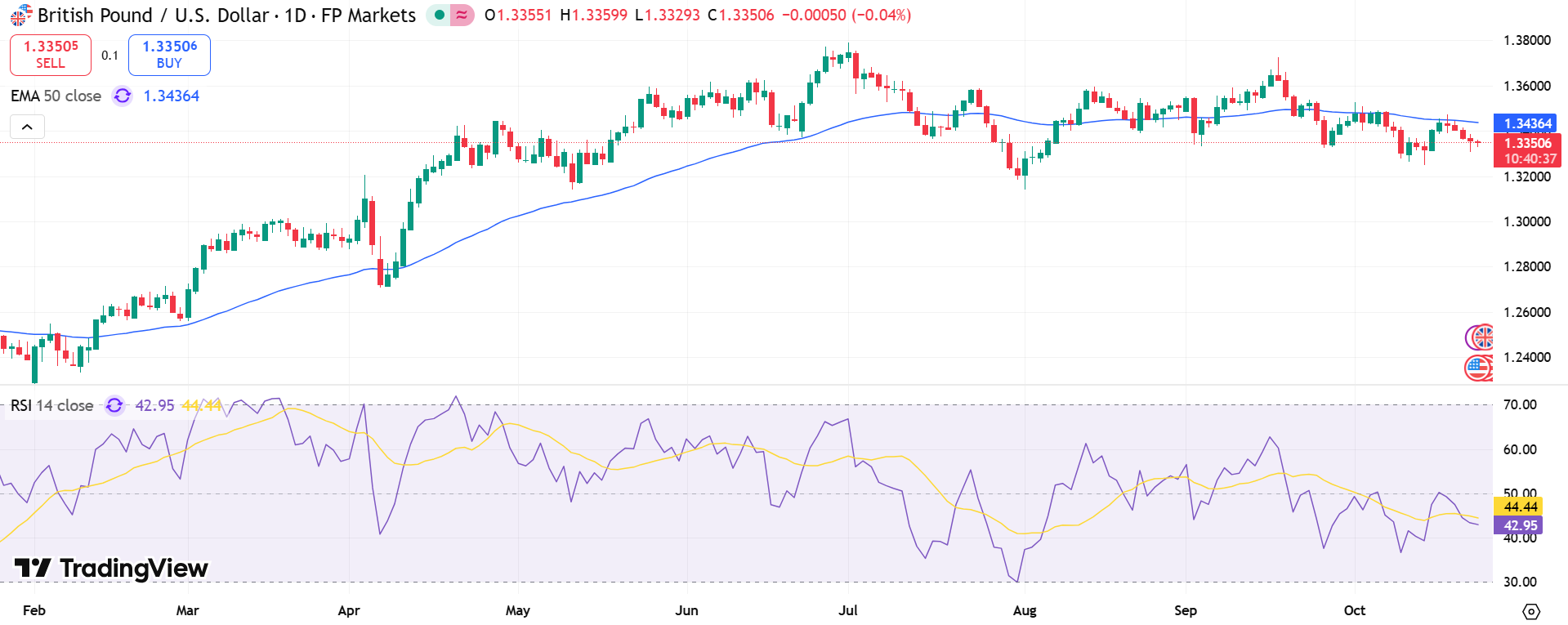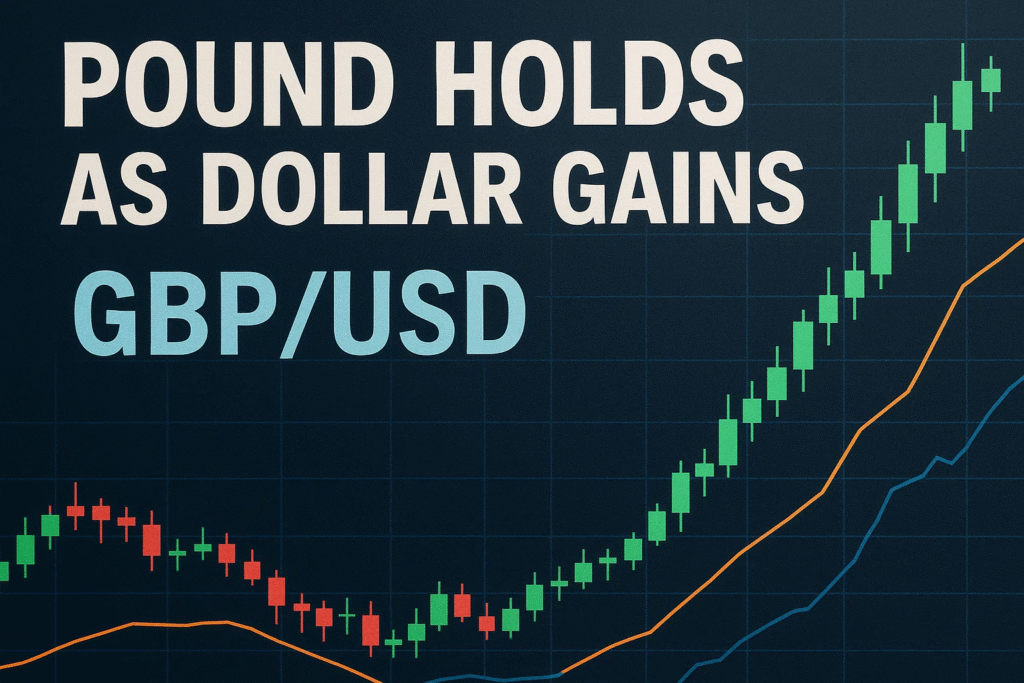The British pound struggled for direction on Thursday, hovering near 1.3350 against the U.S. dollar as renewed U.S.-China trade tensions and fresh U.S. sanctions on Russian crude reinforced a risk-off tone in global markets. The move reflects both a stronger dollar and growing expectations that the Bank of England (BoE) could cut rates again in December.
At the same time, investors are cautious ahead of key inflation and employment data releases, which could further shape the BoE’s near-term policy outlook. Disappointing UK labor figures earlier in the week have already fueled speculation that policymakers will continue their gradual easing cycle amid slowing wage growth and tepid consumer demand.
“Market sentiment is fragile, and the pound remains vulnerable to downside risk if U.S.-China tensions deepen or BoE signals dovish guidance,” said a London-based FX strategist.
Technical Outlook: Key Levels to Watch
From a technical standpoint, the pair’s recent performance suggests limited downside momentum. The overnight breakout above the 100-period Simple Moving Average (SMA) on the four-hour chart, along with a move past the 38.2% Fibonacci retracement of the latest pullback, signals potential for a modest rebound.
Upside targets:
- 1.3480–1.3485: 50% Fibonacci retracement zone
- 1.3500: Psychological resistance level
- 1.3545–1.3550: 61.8% Fibonacci retracement
Support levels:
- 1.3400: Initial short-term support
- 1.3355: 23.6% Fibonacci retracement
- 1.3300–1.3245: Deeper support zone, near two-month lows
Technical indicators, including the Relative Strength Index (RSI) and MACD, show improving momentum, suggesting that buyers may defend key support levels in the near term. However, sustained gains above 1.3500 would be needed to confirm a bullish reversal.
BoE Policy and Market Sentiment

The pound’s muted tone also reflects growing skepticism over the UK’s fiscal outlook ahead of November’s Autumn Budget. Traders are hesitant to take aggressive long positions amid uncertainty about future spending and taxation measures.
On the broader macro front, the U.S. dollar remains supported by safe-haven inflows and hawkish sentiment surrounding the Federal Reserve’s next moves. With risk appetite fading globally, GBP/USD may remain range-bound as investors seek clarity on both trade policy and central bank direction.
Overall, sentiment for the pair is cautiously bearish in the short term, though technical resilience above 1.3350 suggests potential for limited corrective gains before year-end.


